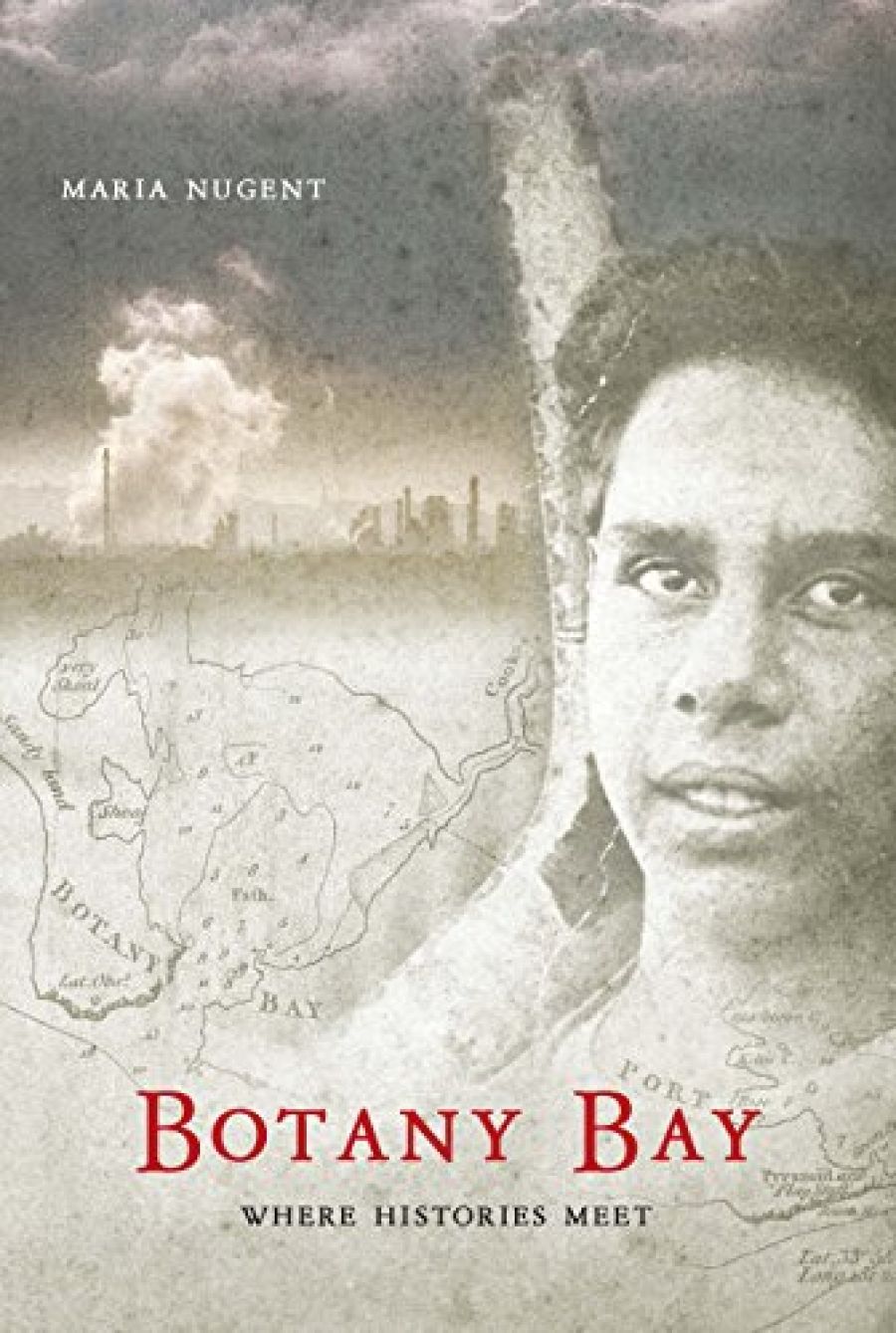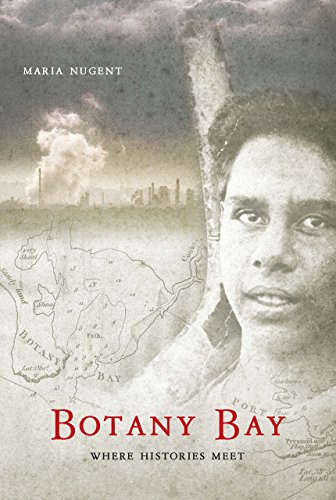
- Free Article: No
- Contents Category: Australian History
- Review Article: Yes
- Article Title: What if?
- Online Only: No
- Custom Highlight Text:
Tasmania was named Tasmania, instead of Van Diemen’s Land, because of a need to push the island’s history back as far as possible beyond 1803. The Dutch explorer Abel Janszoon Tasman was usefully iconic partly because he had nothing to do with convicts. But yearning for a distant past, a past cut off from the present, was common among nineteenth-century Europeans. As John Stuart Mill remarked, ‘comparing one’s own age with former ages’ was suddenly an everyday habit. The fact that several generations divided Tasman’s visit from British settlement was almost an advantage.
- Book 1 Title: Botany Bay
- Book 1 Subtitle: Where histories meet
- Book 1 Biblio: Allen & Unwin, $39.95 pb, 256 pp
- Book 1 Cover Small (400 x 600):

Cook is linked with Botany Bay because it was there that he, his passengers and crew, stayed for nine days in 1770 on their voyage up the east coast. The place was named to honour the botanists on board, especially Joseph Banks, afterwards President of the Royal Society. In that respect, its name also honoured the scientific achievements of Enlightenment Europe. And yet, within twenty years, with the arrival of the convicts, ‘Botany Bay’ became synonymous with the cruel and ludicrous degradation of humanity.
In writing about Botany Bay, Maria Nugent dwells on such curious shifts of meaning. This is indeed a wonderful book. It is extraordinary that the contemplation of a single place can produce so much. The gap between 1770 and 1788 may be small, but there are other gaps, in time and place, which make this brief interval echo. Botany Bay was the First Fleet’s initial landing place, on January 18, but within a week the people had been moved to a much more promising site in Port Jackson. Those few days represent another slippage, a gap between the spot long anticipated by all on board – and the place whose name was to be used for the settlement for many years afterwards – and its real place of existence.
And again, the First Fleet was almost immediately followed by a French expedition of discovery, under Jean-François Lapérouse. The French stayed long enough to bury their priest, Père Receveur, and to make a vegetable garden. But they also managed to establish a permanently tantalising possibility. What if they had got here first and made Australia French? Since the 1820s there have been local memorials to the expedition. Indeed, this counter-factual imagining almost found its apotheosis in 1917, when the state premier tried to cede to France a small piece of surrounding land. It was an ephemeral and, in retrospect, an extraordinary gesture, totally at odds with today’s ideas about the sacred integrity of ‘our’ continent.
Building on Paul Carter’s notion of ‘the road to Botany Bay’, Nugent also explores the spatial gap between the metropolis at Sydney Cove and various sites on the bay’s north side. Carter’s road, in its original, palpable form, was created by convicts during the very first weeks, who hoped the French would take them home. It was a gap in space that represented escape – not escape outwards, like taking to the bush, but escape back to the heart of things, back to the past.
And yet, in due course, the ‘road’ itself represented exile. Over two centuries, the communities and institutions identified with Botany Bay were to be satellites of the city, and some had a character directly challenging all that was meant to be best about Sydney and Australia.
They included the Aboriginal community at Frenchman’s Bay, a site that became the suburb of La Perouse. Here was exile and escape bundled altogether. The Aborigines were a tourist attraction, and some of them made a living by selling artefacts, throwing boomerangs and telling stories about the time when their forebears had seen Captain Cook face to face. These people, for all their degraded and outcast appearance, somehow seemed closer to Australia’s Enlightenment hero than the holidaymakers who were his spiritual heirs.
At this point, Nugent’s book makes an important contribution to current concerns about Aboriginal people as the subjects and creators of twentieth-century popular culture. The objects on sale at La Perouse included elaborately inscribed boomerangs fashioned from local wood, and table decorations made from shells picked up on nearby beaches. Some examples are now in museums as items of public culture, and they link present Aboriginal life with various phases of the past. Nugent vividly describes the way Aboriginal people she has known, on recognising such objects in public collections, have used them to focus their own memories. ‘[T]here is something undeniably powerful,’ she says, ‘in the act of taking into one’s possession a material trace … that has its origins in the history of dispossession.’
Most of the argument is subtle and sinewy, as Nugent unravels, with cool and delicate judgment, contradictory and complimentary ideas about Botany Bay. But somehow, as she tells the story of the last few decades, when Aboriginal men and women began the process of taking possession (very partially) of their past, it must be said that her logic becomes more indulgent. She herself remarks on the ‘utopian’ language of other writers. Now she becomes slightly utopian herself, as she deals with people who are her own friends and with events in which she has taken part.
In the early 1990s, for instance, January 26, the day that Aborigines had so far called ‘Invasion Day’, was renamed ‘Survival Day’. (It was now marked by concerts at La Perouse.) The shift in name – the gap in meaning – is pivotal, and it is precisely the kind of event the book has set itself to explore. The word ‘survival’, Nugent says, expressed continuity rather than discontinuity and Aboriginal action rather than the action of others. But surely it also offers an image of passivity surprising enough to need explanation and judgment.
And indeed, this book has enough material to make the notion of mere survival problematic. Etched into the sandstone headland at La Perouse is the ancient figure of a whale. It is linked to local legend and to a deep sense of place, and it was quite clear a hundred years ago. Now it is barely visible and, without constructive action, it will not survive. As Nugent says, ‘re-grooving is required’, and re-grooving – determined maintenance – is consistent with Aboriginal practice. And yet, current heritage legislation makes re-grooving a criminal offence.
Nicolas Rothwell, in The Australian, has lately called for more trenchant criticism of Aboriginal painting and for less indiscriminate praise. The same point might be made of all aspects of Aboriginal thought and creativity. Reading this book, we might well ask what has survival meant, in intellectual terms, for Aboriginal people? How has it shaped their understanding, their art, their sense of order and the past, and what does that understanding have to offer now? Current Aboriginal understanding might save the whale. It is hard to know what more it might do if books like this tackled it more keenly.


Comments powered by CComment